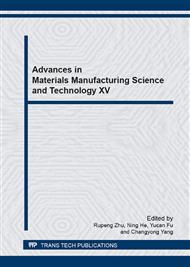p.179
p.183
p.189
p.194
p.198
p.202
p.207
p.213
p.217
Some Observations in Grinding Surface Quality of FRCMC
Abstract:
FRCMCs have potential applications in aerospace and other high-tech fields. According to FRCMCs anisotropic and non-homogeneous structure, the composites surface characteristics are different from metal material. Fiber orientations play the decisive role in grinding surface quality of woven ceramic matrix composites. This paper investigates the relationship between fiber orientations and grinding surface quality. Using a non-contact optical measurement instrument, the method was developed on 2.5D SiO2/SiO2 composite. Through a series of measuring experiments, it was found that greater grinding surface quality occurred at a fiber orientation 90, but poorer grinding surface took place at a fiber orientation 0. Meanwhile there were less surface defects at acute fiber orientation angle than at obtuse angle. The research obtained will be an important technical support on improving the processing quality of FRCMC.
Info:
Periodical:
Pages:
198-201
Citation:
Online since:
October 2013
Authors:
Keywords:
Price:
Сopyright:
© 2014 Trans Tech Publications Ltd. All Rights Reserved
Share:
Citation:


